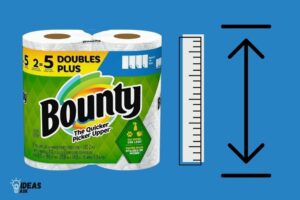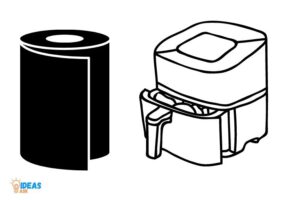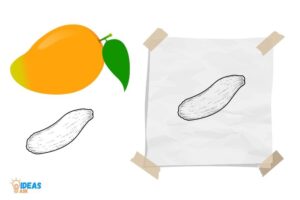How to Unclog Toilet Without Plunger Paper Towel? 5 Methods
To unclog a toilet without a plunger and using paper towels, follow these simple steps: pour hot water, use a toilet brush, create a makeshift toilet snake, and apply a dish soap solution.
A clogged toilet is a common household issue that can be caused by excessive toilet paper, foreign objects, or buildup in the pipes.
While using a plunger is the most common method to unclog a toilet, there are alternative ways to tackle the problem without one.
In this case, we will discuss how to unclog a toilet using paper towels and other household items.
Pour hot water into the bowl to help break down and soften the clog. Make sure the water is not boiling, as it can damage the porcelain.
Use a toilet brush as an alternative to a plunger, and push it down the drain hole to break up and dislodge the clog.
Create a makeshift toilet snake by straightening a wire coat hanger and wrapping the end with paper towels. Insert the wrapped end into the drain and twist it to break up the clog.
Lastly, apply a dish soap and hot water solution to help lubricate the pipes and make it easier to flush the clog away. Allow the solution to sit for a few minutes before attempting to flush the toilet again.
5 Effective methods Of Unclogging Toilet Without a Plunger or Paper Towel
| Method | Materials Needed | Steps |
|---|---|---|
| Hot Water | – Bucket of hot water | 1. Pour the hot water into the toilet bowl. 2. Wait for a few minutes. 3. Flush the toilet to see if the clog clears. |
| Dish Soap | – Dish soap – Hot water | 1. Squirt a generous amount of dish soap into the toilet bowl. 2. Add hot water to help dissolve the soap. 3. Wait for 20 minutes. 4. Flush the toilet to see if the clog clears. |
| Baking Soda and Vinegar | – Baking soda – Vinegar – Hot water | 1. Pour one cup of baking soda into the toilet bowl. 2. Add two cups of vinegar, causing a fizzing reaction. 3. Wait for 20-30 minutes. 4. Pour hot water into the toilet bowl. 5. Flush the toilet to see if the clog clears. |
| Toilet Brush | – Toilet brush | 1. Push the brush into the drain hole. 2. Apply pressure and move the brush in a circular motion. 3. Pull the brush out and flush the toilet to see if the clog clears. |
| Wire Hanger | – Wire hanger – Rubber gloves | 1. Unravel the wire hanger to create a straight piece. 2. Bend one end of the hanger to create a hook. 3. Push the hook into the drain hole. 4. Twist and turn the hanger to break up the clog. 5. Pull the hanger out and flush the toilet to see if the clog clears. |
Key Takeaway

Five Facts About Unclogging a Toilet Without a Plunger or Paper Towel
Understanding The Causes Of Toilet Clogs
Toilet clogs are one of the most annoying and frustrating plumbing problems that homeowners often face. They can cause messy and unpleasant situations, leading to unpleasant odors and potential water damage.
Thankfully, there are ways to deal with clogs without using a plunger or paper towel. However, before you can solve the issue, it is essential to understand the common causes.
Common Causes Of Toilet Clogs
There are several reasons why your toilet may clog, but the most frequent culprits are human waste, toilet paper, and foreign objects.
Here are some other factors that can contribute to clogs:
- Flushing non-degradable items such as baby wipes, paper towels, facial tissues, sanitary products, and dental floss can cause blockages in your toilet pipes.
- Improper disposal of food scraps or cooking oils can affect your drains and cause severe blockages.
- Low-flow toilets that produce weak flushes or older toilets that require more water to work correctly can lead to clogs.
- Roots of trees and shrubs can burrow through sewer lines, causing obstructions that lead to clogs.
Understanding How Your Toilet Works
Before reading about how to tackle toilet clogs, it is essential to understand how your toilet works. Typically, toilets have three main components: the bowl, the tank, and the flapper.
When you flush your toilet, water from the tank flows into the bowl, pushing waste and toilet paper down the drain and out of your home.
Hence, it is essential to check for any broken, malfunctioning, or old parts that may be causing clogs.
The Importance Of Prevention
The best course of action to avoid clogs is prevention. By making simple changes in your habits, you can limit the frequency of clogs and reduce the chances of needing to unclog your toilet.
Here are some tips to prevent clogs:
- Throw tissues, baby wipes, and other non-degradable items in the trash can instead of the toilet.
- Avoid pouring oil or grease down your drains.
- Use a low-flow toilet or upgrade to a modern one.
- Consider regular inspections to prevent root intrusion.
Understanding the causes of toilet clogs is crucial to prevent and tackle them. Follow the tips mentioned above, and you can keep your toilet running smoothly and avoid the need for frequent plunging.
Home Remedies For Unclogging A Toilet
Dealing with a clogged toilet can be unpleasant and often requires a plunger. However, not everyone has a plunger available or might not want to use one.
Fortunately, there are several home remedies that can help unclog your toilet without a plunger. We will provide you with some effective methods you can use to resolve this annoying issue.
Vinegar And Baking Soda Method
The combination of vinegar and baking soda is a well-known method to unclog a toilet. The acidic properties of vinegar act to break down any blockages, while the baking soda helps to create air bubbles that can help to loosen any debris.
Here’s how to use this method:
- Pour 1 cup of baking soda in the toilet bowl.
- Add 2 cups of vinegar to the bowl.
- Wait for about 10 minutes.
- Pour hot water into the bowl to flush out the debris.
- Repeat the process if needed.
Dish Soap And Hot Water Method
Dish soap is not just for cleaning dishes, but it can also help to unclog your toilet. It acts as a lubricant, allowing debris to slide down the drain more easily. The hot water helps to break down the debris.
Here’s how to use this method:
- Squeeze a generous amount of dish soap in the bowl.
- Add hot water to the bowl until it’s about halfway full.
- Wait for about 10 minutes.
- Try flushing the toilet.
Epsom Salt Method
Epsom salt is another effective method for unclogging a toilet. It helps to soften and break down any blockages in the toilet.
Here’s how to use this method:
- Pour 1 cup of epsom salt into the toilet bowl.
- Add hot water to the bowl until it’s about halfway full.
- Wait for about 10 minutes.
- Try flushing the toilet.
Wire Hanger Method
If the above methods don’t work, you can use a wire hanger to manually unclog the toilet. This method should be used as a last resort.
Here’s how to use this method:
- Unbend a wire hanger until it’s straight.
- Insert the hanger into the toilet drain and try to dislodge any debris.
- Flush the toilet.
Wet/Dry Vacuum Method
If none of the above methods work, you can use a wet/dry vacuum to unclog the toilet. Before using this method, ensure that the vacuum is suitable for wet materials.
Here’s how to use this method:
- Set the vacuum to “wet” mode.
- Place the hose into the toilet bowl, ensuring there’s a tight seal.
- Turn on the vacuum and wait for it to unclog the debris.
There are several simple methods for unclogging your toilet without a plunger. The above home remedies can save you from the inconvenience of using a plunger or calling a plumber.
Try them out one by one, and you’ll find the one that works best for your situation.
Professional Methods For Unclogging A Toilet
Are you tired of staring at a clogged toilet and not knowing what to do? Don’t worry, because we’ve got you covered with some professional methods for unclogging your toilet.
Here are four effective methods that will help you get your toilet back in working order.
Plumbing Snake Method
A plumbing snake is a flexible wire that can be inserted into your toilet drain to break up any clogs.
Here’s how you can use a plumbing snake to unclog your toilet:
- Insert the snake into the toilet bowl and push it down until you feel resistance.
- Twist the snake to break up any clogs.
- Remove the snake from the toilet bowl and flush the toilet to see if the clog has been cleared.
- Repeat the process until the clog has been completely cleared.
Toilet Auger Method
If a plumbing snake doesn’t work, you can try using a toilet auger. A toilet auger is a tool specifically designed to unclog toilets.
Here’s how you can use a toilet auger to unclog your toilet:
- Insert the auger’s end into the toilet bowl and push it down until you feel resistance.
- Turn the handle clockwise to break up any clogs.
- Pull the auger out and flush the toilet to see if the clog has been cleared.
- Repeat the process until the clog has been completely cleared.
Hydro Jetting Method
Hydro jetting is a powerful method for cleaning out stubborn clogs in your toilet drain.
Here’s how you can use hydro jetting to unclog your toilet:
- Rent a hydro jetting machine from your local home improvement store.
- Insert the machine’s nozzle into the toilet bowl and turn it on.
- The machine will shoot high-pressure water into the drain to break up any clogs.
- Flush the toilet to see if the clog has been cleared.
- Repeat the process until the clog has been completely cleared.
Enzyme-Based Drain Cleaners
If you prefer a more natural approach to unclogging your toilet, enzyme-based drain cleaners can be a great option. These cleaners use natural enzymes to break down any clogs in your toilet drain.
Here’s how you can use enzyme-based drain cleaners to unclog your toilet:
- Pour the cleaner into the toilet bowl and let it sit for a few hours.
- Flush the toilet to see if the clog has been cleared.
- Repeat the process until the clog has been completely cleared.
There you have it: four professional methods for unclogging your toilet. Whether you prefer a more natural or powerful approach, these methods will help you get the job done.
Knowing When To Call A Professional Plumber
Signs That Diy Methods May Not Work
When you’re dealing with a blocked toilet, your first thought might be to grab a plunger or to rely on diy techniques. Although some clogs can be easily resolved, there are situations where these methods may not be effective.
Here are some signs that diy methods may not work:
- Water keeps rising despite your diy efforts
- Multiple fixtures are clogged
- Unusual toilet behavior (eg. Water backing up in a nearby sink)
- Presence of foul odors
If you experience any of the above signs, it may be best to call in a professional plumber.
When It’S Best To Call A Professional Plumber
While there are many diy methods to unclog a toilet, sometimes the problem is too severe, and it requires the expertise of a professional plumber.
Here are some situations where it’s best to call in a plumber:
- When you’ve tried multiple diy methods and nothing has worked
- When you’re experiencing regular clogs
- When you suspect that the blockage is caused by a bigger issue (eg. Tree roots, damaged pipes)
- When you’re dealing with a toilet installed in a complicated location (eg. Basement)
Professional plumbers have the necessary tools and experience to handle complicated clogs and fix any underlying plumbing issues.
Average Cost Of Plumbing Services For Unclogging Toilets
The cost of hiring a professional plumber to unclog your toilet can vary depending on several factors such as your location, the severity of the clog, and the time of the day.
On average, you can expect to pay between $100 to $300 for basic unclogging services. Additional services, such as camera inspections and repairs, can cost up to $800.
It’s worth noting that some plumbers offer flat rate charges for unclogging toilets, so it’s essential to ask for a quote before hiring services.
While diy methods can be effective, it’s crucial to know when to call in a professional plumber. Don’t hesitate to seek professional help if you’re dealing with persistent clogs or suspect that there’s an underlying plumbing issue.
Remember, investing in professional plumbing services can save you money in the long run.
FAQ On Unclogging a Toilet Without a Plunger or Paper Towel
What Are The Alternatives To A Plunger?
You can use hot water, a wire hanger, or dish soap to unclog your toilet without a plunger.
How Can Hot Water Help Unclog A Toilet?
Hot water can dissolve the obstruction in the toilet bowl and loosen the clog, making it easier to flush.
Can I Use A Wire Hanger To Unclog My Toilet?
Yes, straighten out a wire hanger, insert the curved end into the toilet, and use it to break apart and dislodge the clog.
Will Dish Soap Help Unclog My Toilet?
Yes, pour a quarter cup of dish soap into the toilet bowl and let it sit for 30-40 minutes before flushing.
How Can I Prevent Future Toilet Clogs?
Avoid flushing items like wipes, paper towels, or feminine products. Use less toilet paper and consider installing a bidet.
Conclusion
To conclude, it can be a hassle when your toilet gets clogged and you don’t have a plunger or paper towel at hand. However, you don’t need to worry anymore, as there are many alternative solutions to unclog a toilet.
From using dish soap and hot water to using a wire hanger or a wet/dry vacuum, you can easily unclog your toilet without resorting to a plunger or paper towel.
Remember to take all necessary precautions when dealing with a clogged toilet, and if all else fails, it’s always a good idea to call in professional help.
By following the tips and tricks mentioned in this post, you can avoid unnecessary expenses and ensure that you’re prepared for any toilet-related emergency in the future.





